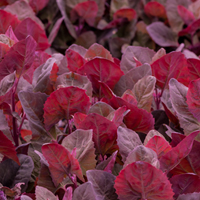Phlegm medically termed sputum can be characterised as a type of mucus that is secreted in your chest, lungs and throat. In most cases, the phlegm coughed up is clear and white and isn’t a cause for concern. It primarily helps in clearing the throat, chest and lungs of irritants and infections. However, in case the phlegm is green in colour and coming out in copious amounts, it might indicate you are under the weather with a cold or have another medical or health problem.
Also Read: Chest Infection: Causes, Symptoms And Treatment
What Causes The Green Phlegm?
The colour of phlegm usually varies depending on the presence of certain substances, such as bacteria, viruses, other microbes, immune cells like WBC or environmental factors. A green or yellowish-green phlegm typically indicates the presence of a bacterial or other microbial infection in the respiratory system. The green hue of the phlegm primarily occurs due to an enzyme called myeloperoxidase, which is secreted by the white blood cells when they are combating infection in the respiratory tract.
Also Read: Bronchiectasis - Causes, Symptoms and Treatment
What Are The Common Causative Factors Of Coughing Up Green Phlegm?
There are numerous health abnormalities — ranging from mild to severe — that can result in coughing up green phlegm, including:
Bacterial Infections:
The most immediate cause of hurling out green phlegm in excessive amounts is bacterial infections, like bronchitis, sinusitis, or pneumonia. These infections are often accompanied by characteristic indications like high fever, persistent cough that doesn’t go away, chest discomfort, breathing troubles and fatigue.
Chronic Bronchitis:
Chronic bronchitis, often correlated to smoking or excessive exposure to environmental pollutants, can cause ongoing inflammation of the lungs and respiratory tract and lead to mucus production. In case chronic bronchitis accompanied by productive cough persists for more than three months or more for two consecutive years, the coughed-up phlegm is often in a yellowish-green hue.
Sinusitis:
Sinusitis is a medical condition characterised by the inflammation of the sinus cavity and can occur due to viruses, allergies, or bacteria. Sinusitis is often accompanied by symptoms such as a runny nose, inflamed nasal passage, chronic headaches, and fatigue. A sinusitis occurring due to bacterial invasion usually manifests in the form of coughing up green phlegm, nasal congestion, postnasal drip and developing pressure in the nasal cavities.
Cystic Fibrosis:
Unlike bacterial and viral infections another cause of throwing up green phlegm is Cystic fibrosis, a genetic disorder that affects both the respiratory and digestive systems. It causes thick and sticky mucus production, which exudes a yellowish-green hue. Other associated symptoms may include recurrent respiratory infections, persistent cough, digestive anomalies and poor weight gain.
Evade Respiratory Infections By Boosting Immunity With Our Wide-Range If Medications!
When To Seek Medical Help?
While green phlegm is often a sign of microbial invasion in the respiratory tract, it is mandatory to monitor the accompanying symptoms to avoid complications. Seek medical attention right away if you experience the following indications:
- High fever or persistent fever
- Shortness of breath or difficulty breathing
- Sudden chest pain or tightness
- Coughing up bloody phlegm
- Rapid worsening of the upper respiratory tract symptoms
What Are The Treatment Options For Green Phlegm?
For treating coughing up green phlegm, the doctor needs to first cure the microbial infection in the respiratory tract. This includes:
Antibiotics: If the cause of green phlegm is detected as a bacterial infection, the doctor usually prescribes a course of antibiotics to combat and mitigate the infection.
Treating Underlying Or Associated Conditions: If the cause of green phlegm is a recurrent issue or happening due to a chronic condition like chronic bronchitis or cystic fibrosis, the doctor usually suggests an extensive treatment plan that also deals with managing the underlying condition. This usually comprises prescribed medications, lifestyle modifications, and regular medical follow-ups.
Symptom Relief: For delivering fast relief from the symptoms, the doctor may also suggest some over-the-counter medicines, such as expectorants and decongestants, that broadly helps in relieving congestion and stimulate mucus clearance from the nasal and chest cavity.
How Can You Prevent Coughing Up Green Phlegm?
Apart from prescription medications, the patient may also try out some good respiratory health practices and lifestyle modifications to reduce the risk of infections and the production of green phlegm. This includes:
Adequate Fluid Intake:
Staying hydrated by consuming plenty of water and other fluids helps thin the accumulated phlegm in the chest, making it easier to expel out of the body. For this, one may incorporate water, herbal teas, and warm broths into their routine diet.
Well-Balanced Diet:
Follow a diet rich in nutritious food options to increase body immunity and quickly recover from the underlying illness.
Inhale Steam:
Inhaling steam by adding some selective essential oils like eucalyptus essential oil or clove oil in the boiling water can help slacken the phlegm and alleviate congestion. Try inhaling the hot steam by placing your head over the bowl of hot water and covering the head with a towel or using a humidifier in the room you are staying in.
Gargle With Saltwater Solution:
Gargling with a solution of warm water and salt can help soothe the inflamed throat. Do it several times a day for quick relief.
Frequently Asked Questions
What Does Green Phlegm Indicate?
Green phlegm usually signals the presence of an infection, usually bacterial. The green colour comes from the immune system's response to counteract the infection, specifically from an enzyme called myeloperoxidase, produced by white blood cells to combat off pathogens.
Do I Need To Take Antibiotics For Coughing Up Green Phlegm?
Not necessarily. Though green phlegm can indicate a bacterial infection, it doesn’t always mean that antibiotics are required. Viral infections can also cause green phlegm, and antibiotics are ineffective against viruses. It's best to seek proper advice from a healthcare provider for the right diagnosis and treatment plan.
Is Green Phlegm Bronchitis Or Pneumonia?
It can be a symptom of both bronchitis and pneumonia. While acute bronchitis mostly leads to green or yellow mucus due to bacterial infection. Pneumonia, a more severe lung infection, can also cause green sputum. Your physician can differentiate between these conditions based on symptoms, physical examination, and sometimes imaging or lab tests.
How Can I Clear Green Phlegm?
To help clear green phlegm, you should:
- Drink plenty of fluids to thin the mucus.
- Use a humidifier or take steam inhalations to loosen the phlegm.
- Get gentle chest percussion or postural drainage techniques.
- Take expectorants (after consulting an expert) to help expel the mucus.
- Get rest and avoid irritants like smoke and strong fumes.
How Long Does Green Mucus Last?
The time a person continues to produce green mucus usually varies depending on the underlying cause. In cases of a mild bacterial or viral infection, it might last a few days to a week. If the mucus persists beyond this or is accompanied by other severe symptoms, it is important to seek immediate medical care.
Do I Need To Visit A Doctor If I Cough Up Green Mucus?
You should see a doctor if you are coughing up green mucus, especially if:
- The green mucus persists for more than a week.
- You have a high fever or chills.
- You experience shortness of breath or chest pain.
- You notice blood in the mucus.
- You have underlying health conditions that respiratory infections could exacerbate.
(This article is reviewed by M Sowmya Binu, Health And Nutrition Expert)
Author Profile:
Soumita Basu:
Soumita Basu holds a Bachelor's Degree in Pharmacy and is keenly interested in Ayurveda, home remedies, yoga, fitness, diagnostics, and beauty. With nearly 6 years of experience, she produces evidence-based health content, including articles, videos, and infographics, to provide valuable insights to her audience.
References:
Sputum colour for diagnosis of a bacterial infection in patients with acute cough
Attila Altiner,1 Stefan Wilm,3 Walter Däubener,2 Christiane Bormann,1 Michael Pentzek,1 Heinz-Harald Abholz,1 and Martin Scherer4
https://www.ncbi.nlm.nih.gov/pmc/articles/PMC3410464/
Sputum colour as a marker for bacteria in acute exacerbations of COPD: protocol for a systematic review and meta-analysis
Ruan Spies,1,2 Matthew Potter,1 Ruan Hollamby,3 Stefan van der Walt,4 Ameer Hohlfeld,5 Eleanor Ochodo,6,7 and Richard N. van Zyl-Smit8,9
https://www.ncbi.nlm.nih.gov/pmc/articles/PMC8317370/
Disclaimer:
The content provided here is for informational purposes only. This blog is not intended to substitute for medical advice, diagnosis, or treatment. Always seek the advice of a qualified healthcare provider for any questions or concerns you may have regarding a medical condition. Reliance does not endorse or recommend any specific tests, physicians, procedures, opinions, or other information mentioned on the blog.



















.jpg)

